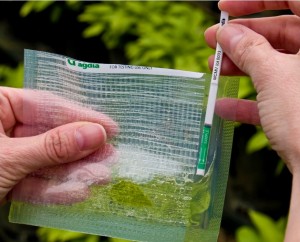 Maize lethal necrosis (MLN) is a severe disease affecting corn. The disease is caused by the combination of Maize chlorotic mottle virus (MCMV) and a virus belonging to the potyviridae family, commonly Sugarcane Mosaic Virus (SCMV). The viruses are vectored by insects as maize thrips, rootworms and leaf beetles.
Maize lethal necrosis (MLN) is a severe disease affecting corn. The disease is caused by the combination of Maize chlorotic mottle virus (MCMV) and a virus belonging to the potyviridae family, commonly Sugarcane Mosaic Virus (SCMV). The viruses are vectored by insects as maize thrips, rootworms and leaf beetles.Corn is one of the main staple foods in East Africa, consequently the Maize Lethal Necrosis Disease is considered as a serious threat for food security. Moreover, corn plants infected with MLN can develop secondary fungal infections and are not considered safe to eat. The disease has been first described in Kenya in 2011 (Wangai et al., 2012) and it has now spread to Uganda, Rwanda, Tanzania and South Sudan often with devastating consequences for corn fields.
If not controlled effectively, MLN can cause total crop loss. Since years a lot of efforts were made by different institutes to identify and manage the disease. The first step in disease control and management is to have rapid, accurate and cost effective diagnostic methods allowing to detect the viruses in the seeds before sowing and to detect the symptoms in the field at very early stages.
Agdia-Emea diagnostic kits and products are routinely used by many laboratories in several East African countries.
To help the scientists and farmers to fight against MLN, our company has recently developed a rapid kit, the MCMV and Potyvirus Immunostrip, allowing rapid and easy disease detection the fields. Thanks to ImmunoStrips® it will be possible to detect immediately the viruses causing MLN, as the first symptoms appear, without the need to ship the samples to a laboratory. This will allow a better monitoring of the disease and help the fight against the disease spread. The test requires no technical training and it is very simple to use. The answer is provided by the test is 30 minutes or less.
Please contact us for more information: info@agdia-emea.com
Reference: Wangai A et al. (2012) First Report of Maize chlorotic mottle virus and Maize Lethal Necrosis in Kenya. Plant Disease 96: 1582.

